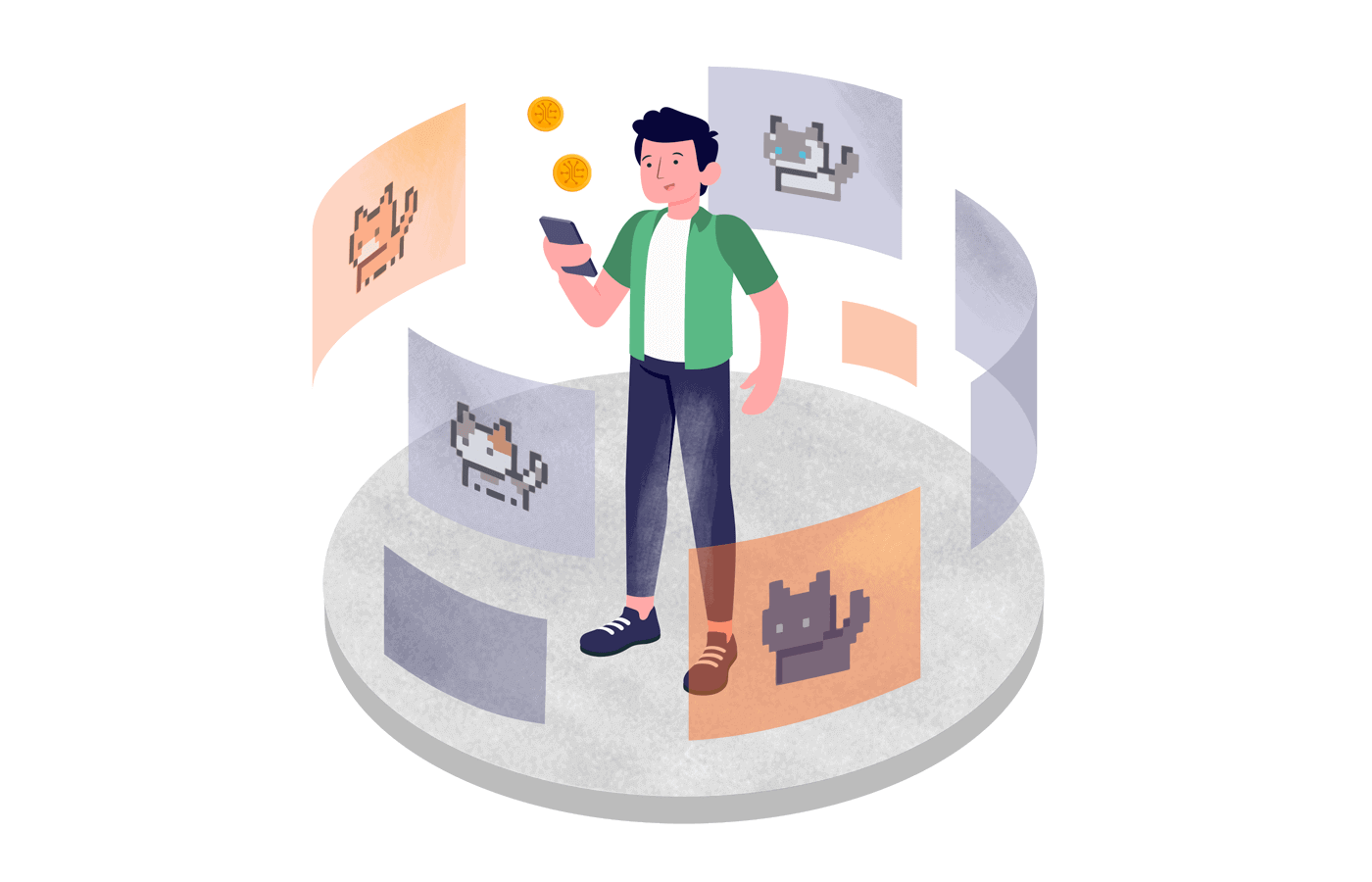Launching an NFT collection isn’t the hard part — getting people to care about it is. The space is crowded and most projects struggle to grow beyond a few hundred supporters. If you don’t have a thoughtful marketing strategy from day one, you’re already behind.
We’ve seen NFT brands that sold out in minutes—and we’ve observed others struggle despite having incredible art and utility.
The difference? An NFT promotion strategy that actually connects with the right audience. In this guide, we’re skipping the fluff and breaking down 20 proven NFT marketing strategies that will help you cut through the noise and make sure your project doesn’t just launch—but succeed.
Let’s get right into it.
What is NFT Marketing?
NFTs (Non-Fungible Tokens) are unique, verifiable digital assets that are hosted on the blockchain. From art and music to in-game items and membership passes, NFTs are a way to monetize, engage, and build communities.
But here’s the thing: just because you create an NFT doesn’t mean people will buy it. That’s where marketing comes in.
NFT marketing isn’t about spamming X or hoping influencers do the work for you. It’s about storytelling, community-building, and positioning your project as something people actually want to be a part of.
Key things to know about NFT marketing:
- Community is everything. Without an engaged audience, even the best NFT won’t sell;
- Hype alone won’t sustain you. Projects that rely on short-term FOMO often crash fast;
- Trust is the currency. Scams have made buyers skeptical; transparency and credibility matter;
- Multi-channel marketing wins. X, Discord, influencers, and collaborations all play a role.
At the end of the day, NFT advertising is about making people believe in your vision—because if they don’t, they won’t buy in.
NFT Marketing Statistics
You must be thinking, why’s there such hype for NFT marketing? NFT revenues are expected to cross over USD 3300 million by 2028.
According to experts, the industry is on a growth trajectory, and the statistics validate the theory:
- Between 2020 and 2021, the NFT market grew by over 20 times. ¹
- The highest-priced NFT (The Merge) sold for over $90 million. ²
- The NFT market will generate US$608.6m in revenue by 2025. ³
- Half of the top ten largest-selling NFTs are from CryptoPunks. ⁴
- The top five NFT projects each surpassed $1 billion in sales. ⁵
- The most sought-after NFTs are related to the Metaverse, gaming, art, and sports. ⁶
Why is NFT Marketing Important?
With thousands of projects fighting for attention, you can’t just drop your collection and hope for the best. Digital marketing is what gets eyes on your project, builds trust, and drives sales.
Here’s why NFT marketing is so important:
- Increasing visibility for your NFT projects. The NFT space is crowded. Marketing makes sure your project stands out;
- Understanding your target audience. Not every collector is your audience. Smart NFT audience targeting connects you with the right people;
- Enhancing trust and credibility in the NFT space. Scams are everywhere. Consistent marketing, real engagement, and a strong community help prove your project is legit, and you’re here to stay;
- Driving higher sales and conversion rates. Hype is nice, but real marketing converts interest into sales. Marketing helps turn potential NFT buyers and push them toward buying;
- Differentiating your NFT from competitors. Thousands of NFTs drop daily. Great marketing tells the story of what makes yours different.
20 Effective NFT Marketing Strategies Checklist
Looking for a ready reckoner on how to get started with marketing your NFT project? Here are 20 useful tactics to make your project popular among the NFT community.
1. Build a Strong NFT Community
Your project is only as strong as its community. People invest in projects not just for the NFT utility or value, but for the culture, exclusivity, and engagement.
So, you should focus on building a loyal, engaged community. This will simplify marketing and drive organic growth.
One of the best examples of this is the Bored Ape Yacht Club (BAYC) project.

The NFC project succeeded because it built a culture, not just an NFT.
Exclusive events, celebrity endorsements, and strong Discord engagement turned it into a status symbol and kept holders invested long after minting.
Here are some tips for you to start building a community for your NFT project:
- Create daily active marketing channels on Discord & X;
- Offer exclusive perks & content for engaged members;
- Encourage UGC (memes, fan art, community-led AMAs);
- Use whitelists smartly—reward true supporters.
2. Enhance Your Branding Strategy
Whether you’re building anything in the NFT world, or the real world, branding is what makes your project memorable.
People don’t just buy NFTs—they buy into stories, aesthetics, and communities that feel authentic. A strong visual identity and a unique brand voice will set you apart and help create an emotional connection with your target audience.
Take the case of Doodles. It became an instantly recognizable NFT project through cohesive, pastel-colored art, a playful tone, and immersive branding.
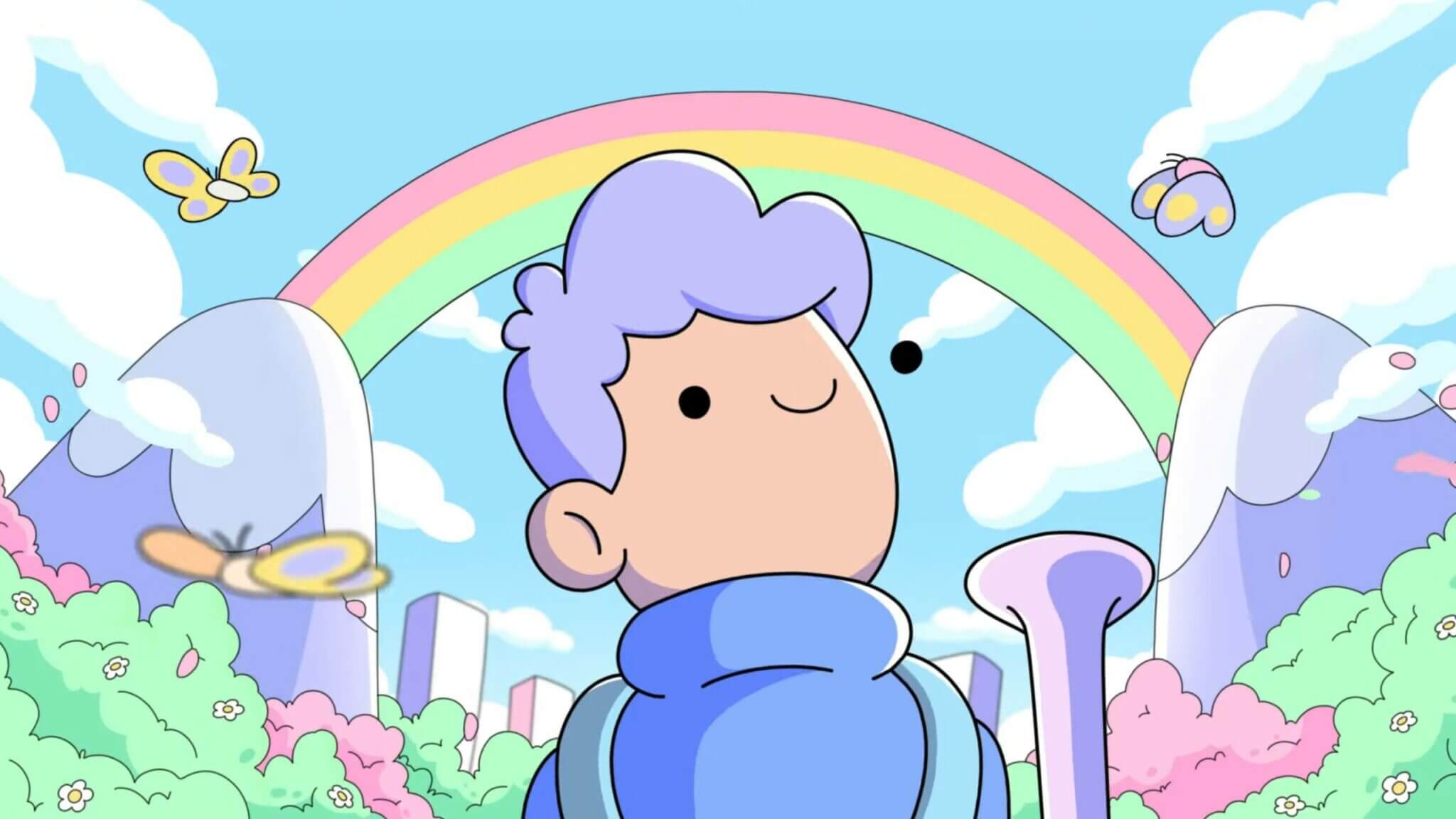
Their success in creating an NFT brand expanded into IRL events, merchandise, and collaborations.
Here are some tips to create a standout brand that goes beyond digital assets:
- Focus on your story and mission. Learn to depict it everywhere;
- Maintain consistency in terms of messaging and visual appeal;
- Use storytelling to create a strong relatable reason for users to stick;
3. Promote on Social Media Platforms
If you’re launching an NFT and not dominating X, Instagram, and TikTok, you’re already behind. Social media is where hype is built, communities grow, and sales happen.
But just tweeting “Minting soon” won’t cut it—you need engaging content, conversations, and consistency.
Look at any famous NFT projects. Every NFT gained its fame by building a community on social media. Take DeGods, for example.
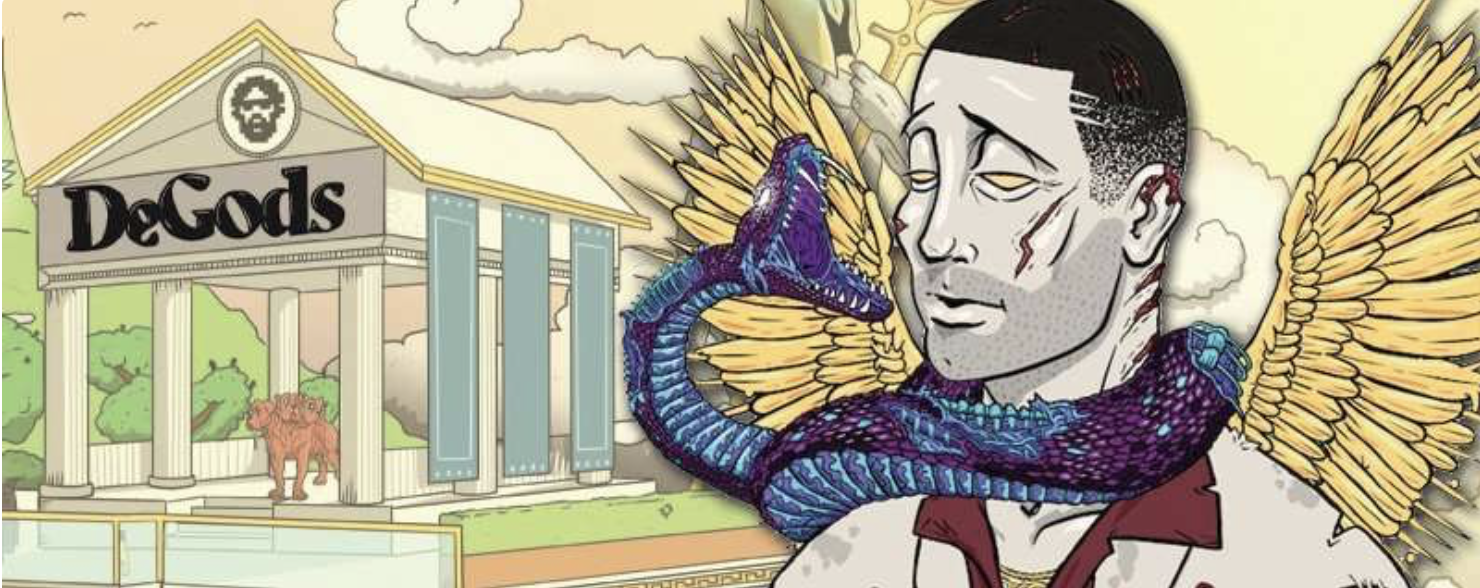
They leveraged Twitter in their early days to gain momentum, became relatable through memes, and community-driven content, and used threads to go viral.
If you want to grow, you should master storytelling like DeGods and use social media to attract and make people curious.
Here are some tips for your NFT social media marketing:
- Use X & Threads, the new social media app, to get organic engagement;
- Post memes & utilize viral trends; NFT audience thrives on humor;
- Host AMAs on popular subreddits and communities;
- Post sneak peeks, exclusive drops, and shoutouts.
4. Leverage Search Engine Optimization (SEO)
Many NFT projects ignore organic SEO, just because they’re riding the ‘hype’ wave. That’s a huge missed opportunity. Remember, if you’re not ranking on Google, you’re handing traffic to competitors.
While social media creates buzz, SEO builds long-term visibility, making sure people searching for NFTs can actually find your project.
One good example of this is how OpenSea has used organic SEO to grow its traffic since its inception.
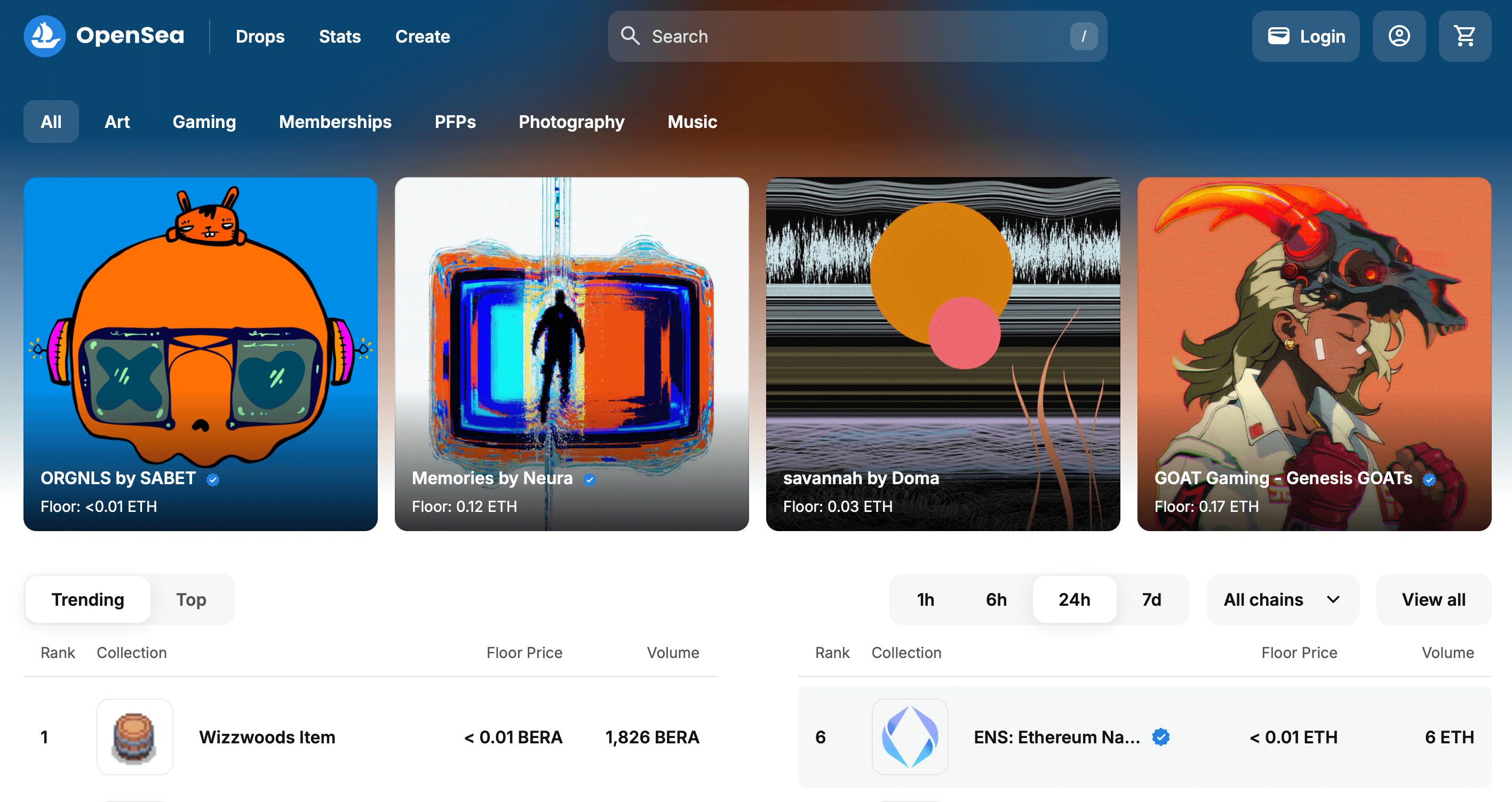
OpenSea dominates Google searches because of SEO-optimized NFT listings and product pages.
When you use relevant keywords, meta descriptions, and backlinks, you rank higher and get more organic traffic.
Here are some tips for your NFT search engine optimization:
- Optimize your website content by adding relevant terms and focusing on on-page optimization;
- Start a blog and create detailed guides on industry trends, your NFT roadmap, etc;
- Guest post on industry websites and crypto magazines.
5. Engage Through Email Marketing
NFT projects are mostly seen relying on X and Discord for growth, but email marketing is an untapped goldmine. When used correctly, it can help you grow a community and nurture fans into buyers.
Unlike social media, where algorithms decide the reach, emails land directly in your audience’s inbox. So, you can focus more on promoting your mission without thinking about reach and virality.
Decentraland did the same with a weekly email newsletter.
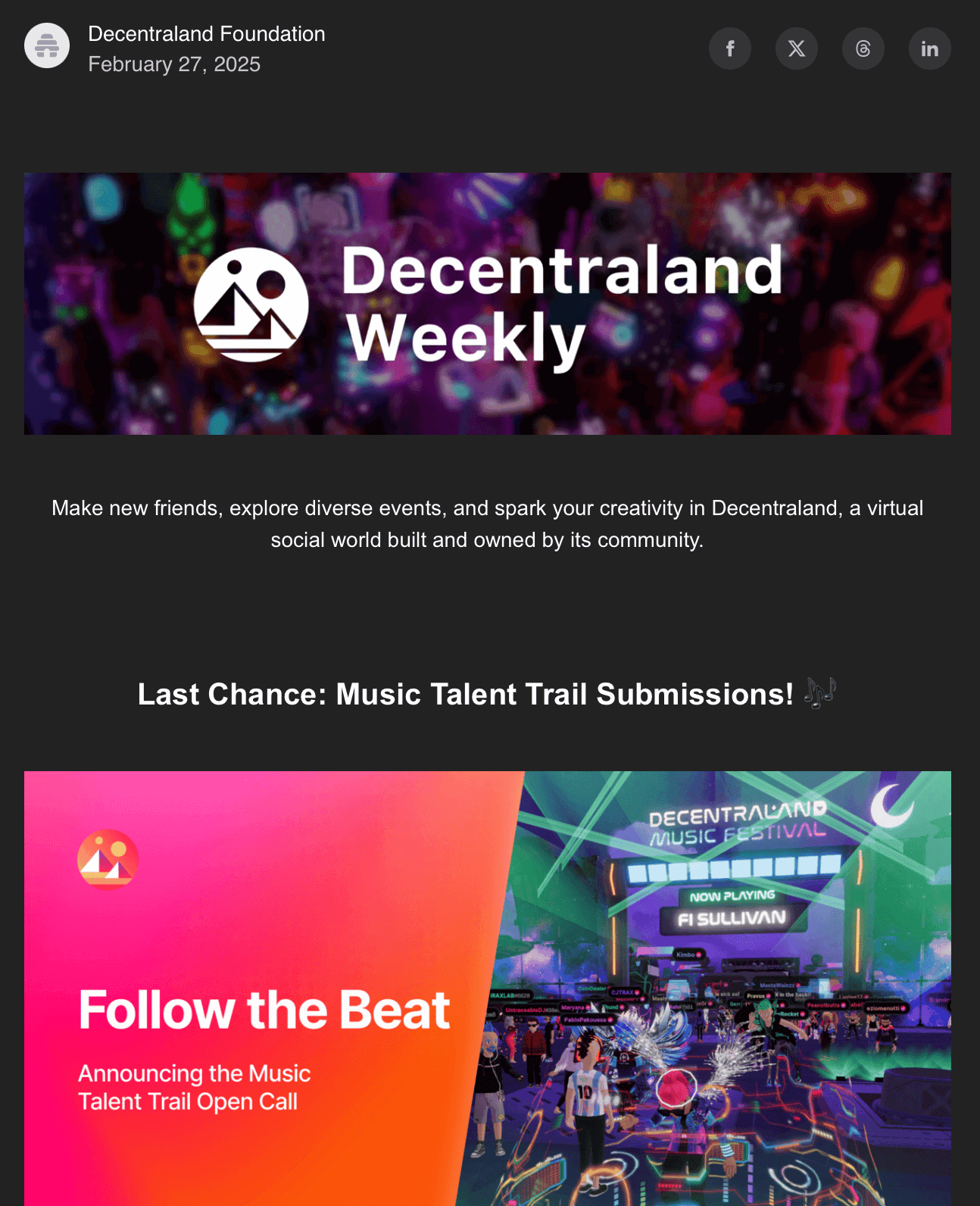
They use their newsletter to share the latest project updates, news about drops, or tease upcoming events.
Here’s how you can utilize email marketing for your project too:
- Build an email list early and start capturing leads even before launch;
- Plan exclusive content, sneak peeks, and community updates via the newsletter;
- Give subscribers first dibs on drops and exclusive perks to grow your base.
Build hype, grow your community, and boost sales with stunning email campaigns. Start in minutes with Sender’s easy-to-use email builder and responsive templates.
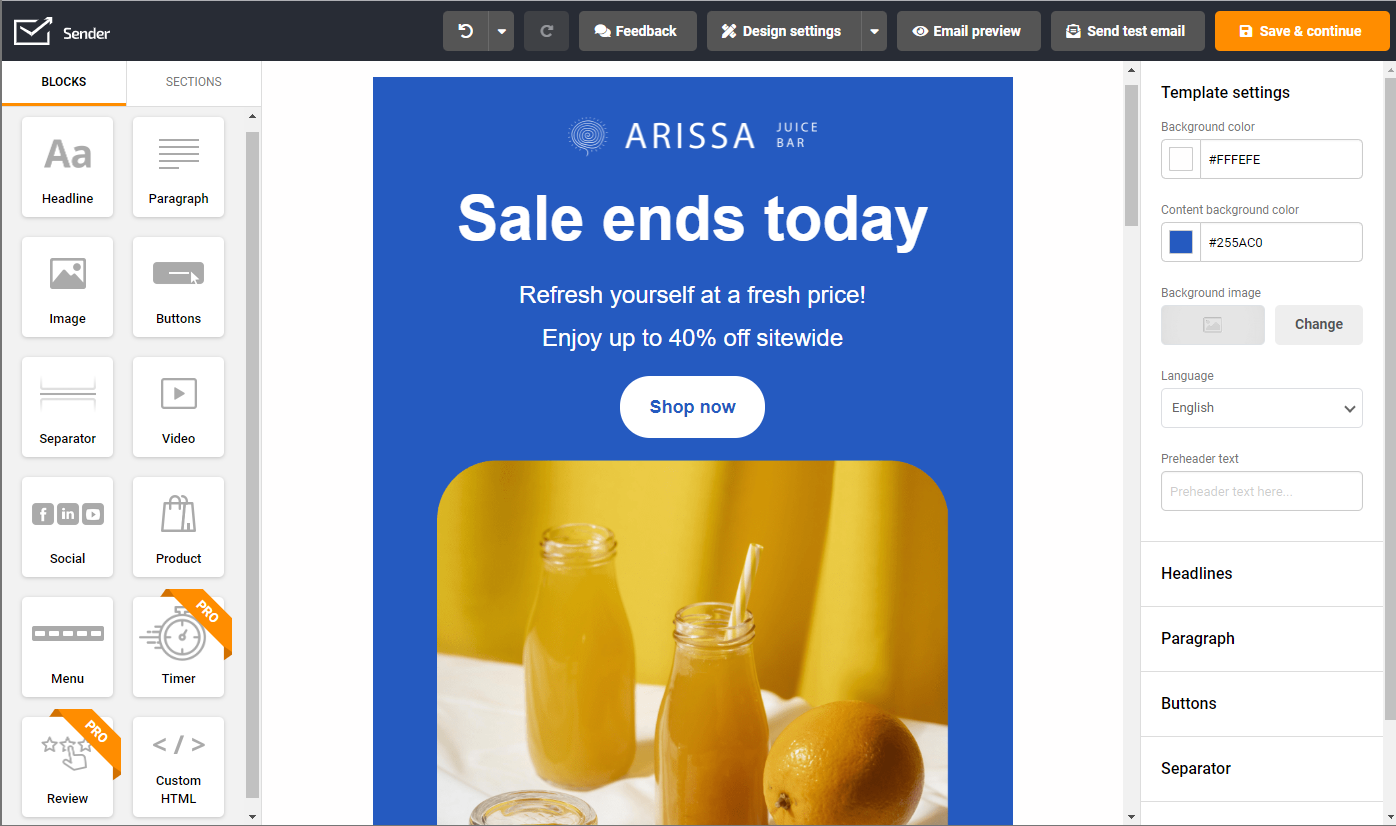
6. Launch a Targeted Ad Campaign
Along with all the tactics above, you should also plan for paid ads to make your projects visible to the right audience. Research where NFT collectors hang out online and target them strategically.
Rarible used X, YouTube, and other online platforms for targeted ads when it first launched. Look at this ad of our future — Rarible billboard in Metaverse.

Its campaign ran across X & Google ads to increase awareness for the platform and attract a relevant user base. The ad creative focused on artistic expression, scarcity, exclusive drops, and community benefits.
Here are some paid ad campaigns ideas for your NFT projects:
- Target NFT and crypto enthusiasts on Reddit & X;
- Engage past website visitors through retargeting ads;
- Write an engaging copy that stops scrolls, creates FOMO, and drives clicks.
7. Use Blockchain Advertising Networks
Along with traditional paid marketing channels like Google & Meta, you should also add blockchain-specific ad networks when marketing a project. Such platforms target niche Web3 users who are most likely interested in an exclusive NFT drop.
Plus, there are fewer restrictions on promoting NFT projects on these platforms with a higher conversion rate.
Axie Infinity, a popular NFT project, used Bitmedia and Coinzilla to attract Web3 gamers to its platform.
They used crypto-native ad networks to avoid friction and attract interested investors without using conventional ad networks. Over time, they were able to onboard thousands of new users who already knew the value of NFT projects.
Here are some tips to replicate their NFT success:
- Advertise on top crypto sites like Coinzilla to get relevant traffic;
- Optimize your mint page for crypto wallet minting;
- Promote scarcity and exclusivity with limited mints and NFT airdrops.
8. Publish Content with Guest Posting
Want to boost credibility and reach serious NFT buyers?
Guest posting on major crypto, NFT, and Web3 blogs puts your project in front of the right audience without spending on ads.
Here’s one such guest post on CoinDesk about The Sandbox:
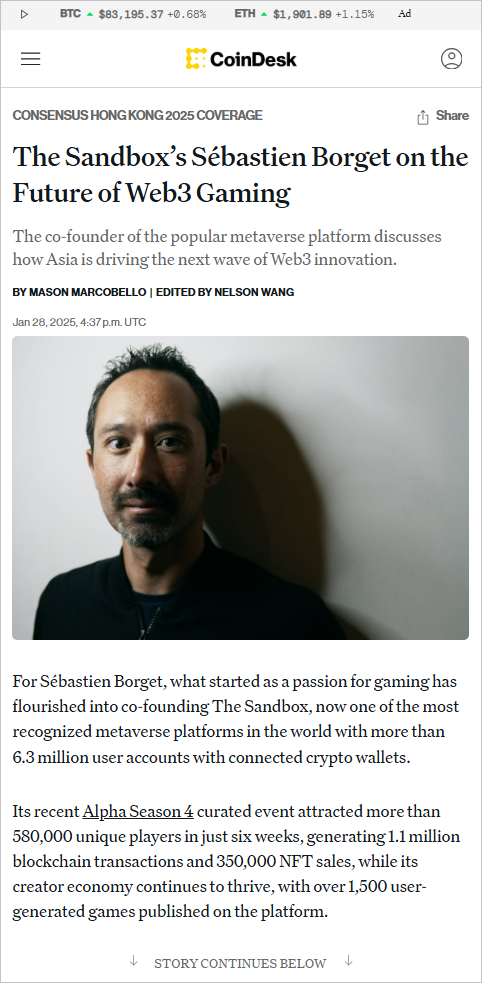
This post was part of Sandbox’s guest posting strategy across NFT Now, Decrypt, and other popular NFT/crypto platforms. The goal is to establish itself as a leader in the Metaverse space.
Guest posts are not new to the online space. They help build authority, drive organic traffic, and establish founders as industry experts.
Here are some recommendations for guest posting:
- Pick platforms with existing audiences that might be interested in your project;
- Write value-oriented content like detailed guides or industry insights;
- Ask for do-follow backlinks to drive traffic and authority to your landing page.
9. Create Teaser Videos for Promotion
A great NFT project needs hype and storytelling—and nothing grabs attention faster than a high-quality teaser video.
Short, visually stunning videos can generate FOMO, explain your project’s value, and build anticipation for the mint day. Have a look at what CloneX did for their exclusive drops:
Before their launch, CloneX dropped cinematic teaser videos showcasing their futuristic designs, instantly creating demand and community excitement. They used such teasers everywhere — from paid ads to landing pages and community forums to generate interest.
Their high-production visuals and storytelling positioned them as premium digital assets before the mint.
Here’s how you should do your NFT teasers:
- Keep them short and high impact with 15-30 sec visuals and strong messaging;
- Post on all social media channels, including TikTok and YouTube shorts;
- Pair them with countdowns to upcoming drops and whitelist promos.
10. List Your NFT on Top Marketplaces
You’re missing out on organic buyers if your NFT isn’t on a major marketplace. NFT marketplaces act as search engines for collectors. They help you gain visibility, credibility, and sales without heavy promotion.
So, make sure to list yourself on OpenSea, Rarible, and other platforms, as Moonbirds did.
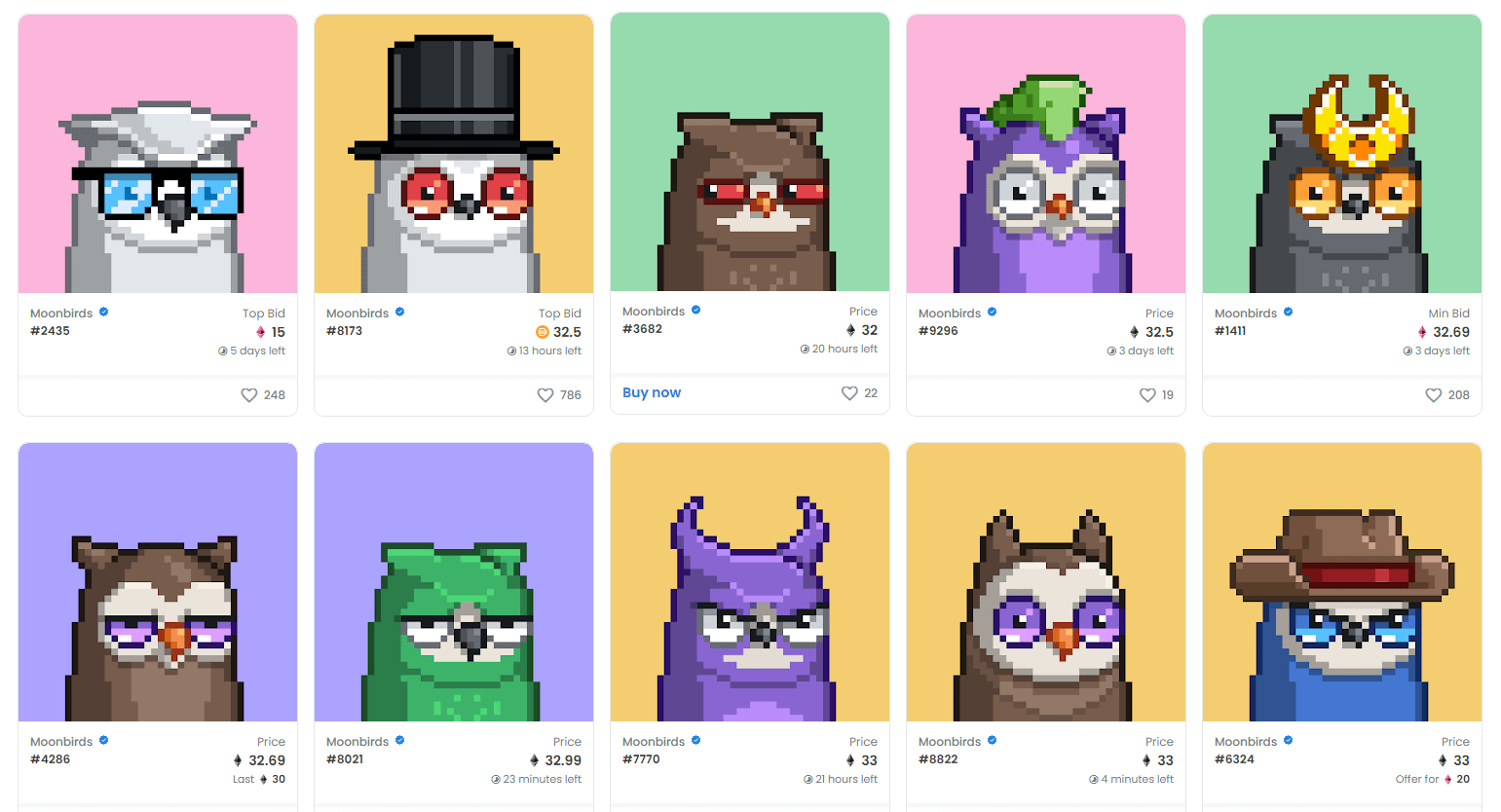
Instead of relying on just OpenSea, Moonbirds is listed on multiple marketplaces (LooksRare, Rarible, and more). This expanded their reach and ensured their collection was visible to different buyer segments, leading to a quick sellout.
You should also plan something similar by:
- Listing on marketplaces like OpenSea, Magic Eden, Rarible, Foundation, etc;
- Optimizing your listing with relevant descriptions and keywords;
- Engaging with marketplace communities on Discord, Reddit, and X.
11. Launch NFTs via Trusted Platforms
Launching on a trusted NFT platform can instantly attract serious buyers.
Collectors are wary of scams, so partnering with established launchpads or marketplaces builds trust before the mint day.
Most NFTs today partner and launch on platforms like OpenSea, Rarible, etc. This ensures that you get a ready audience and trusted infrastructure to ensure a smooth, high-visibility launch.
Here’s what you should do to utilize trustworthy platforms for launch:
- Use launchpads like Magic Eden Launchpad, Binance NFT, Nifty Gateway;
- Partner with marketplaces like OpenSea Drops for curated launches;
- Use smart contracts audited by trusted developers for a seamless experience.
12. Kickstart an Effective PR Campaign
Good PR isn’t just about hype—it’s about credibility, exposure, and trust. The right media coverage puts your NFT project in front of serious investors and collectors.
One great example that comes to mind when we think of NFT PR campaigns is from Pudgy Penguins.
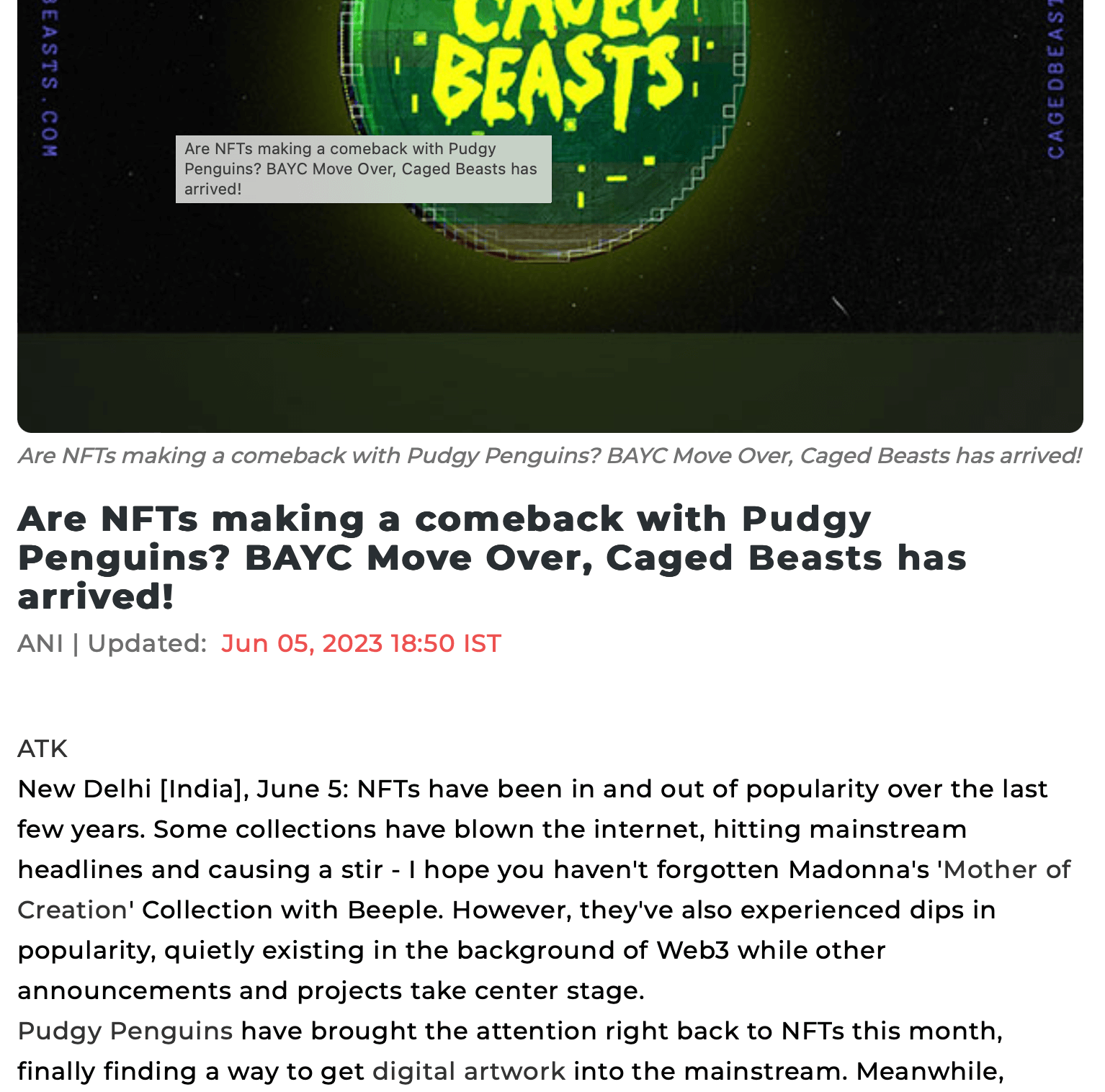
After a rough start, Pudgy Penguins revamped its brand and secured press features on Coindesk, Decrypt, Business Insider, and many international media portals, like the one above.
This boosted trust and helped them bounce back as an NFT collection. Plus, they got a lot of traffic on their minting landing page.
Here are some tips if PR features are on your mind:
- Use storytelling to highlight your vision, uniqueness, and community impact;
- Pitch journalists & bloggers as crypto media is always looking for fresh stories;
- Utilize the influencer community to amplify media coverage with real conversations.
13. Host Giveaways and Contests
Everyone loves free NFTs, and giveaways are a proven way to boost engagement, grow your community, and attract new buyers.
But the key is giving away value—not just freebies that attract freeloaders and bots. A great way is to reward early supporters with exclusive free drops on social media, just like RTFKT did.
RTFKT collaborated with an AI robot rapper on TikTok with 10 million followers and ran limited whitelist giveaways for early supporters. They leveraged the TikTok Top Moments launch to gather traction quickly.
This ensured that only engaged users received access, created exclusivity, and attracted serious collectors.
Here are some tips if you plan to host giveaways:
- Collaborate with popular personalities or platforms for quick traction;
- Whitelist real community members and reward active participants;
- Make rewards exclusive using limited-edition NFTs or access to future perks.
14. Organize Virtual Events and AMAs
NFT buyers don’t just want to invest—they want to connect with the project, team, and vision. Hosting X spaces, AMAs on Discord/Reddit, and live discussions helps build trust, answer questions, and convert interested users into buyers.
You can take inspiration from any popular NFT project with a large following, like Azuki:
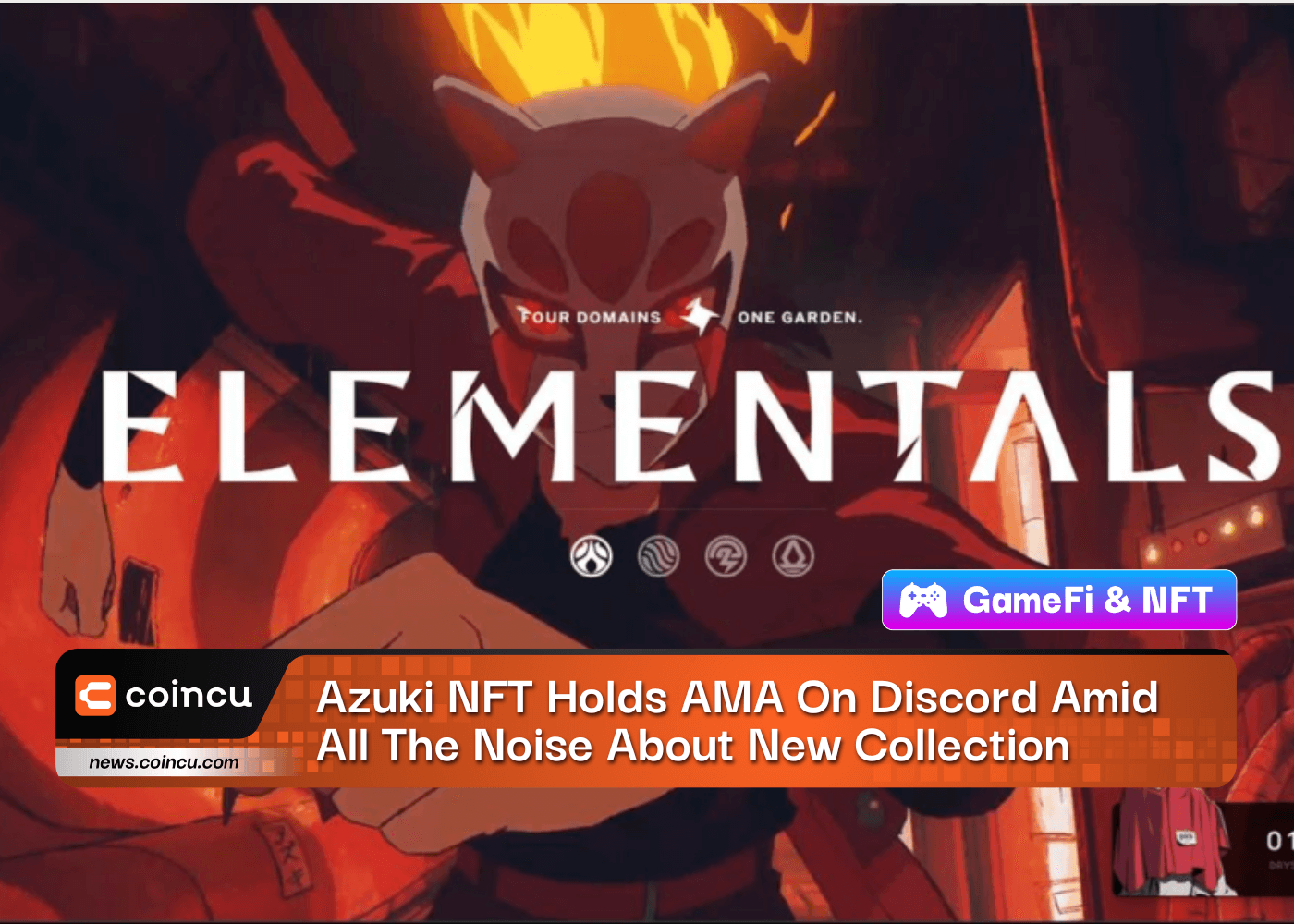
They’ve built a solid online community and AMAs are partly the reason. Being upfront and honest always works when you’re trying to make a following.
You can also host regular AMAs to engage directly with the community, share updates, and hype new developments. This creates transparency and strengthens loyalty.
Here are some ideas for your NFT events:
- Host interactive Q&A sessions on Discord or X for engaged connections;
- Collaborate with NFT influencers and guest speakers for more reach;
- Create FOMO by giving exclusive alpha or perks to attendees.
15. Utilize Discord and Telegram Channels
Your NFT community lives and breathes on Discord. That’s where serious buyers hang out, discuss projects, and form real connections.
If your server is dead or poorly managed, your NFT project will struggle to build trust and hype. So, you must focus on building a credible server where people can interact daily.
Take inspiration from popular servers like DeGods.
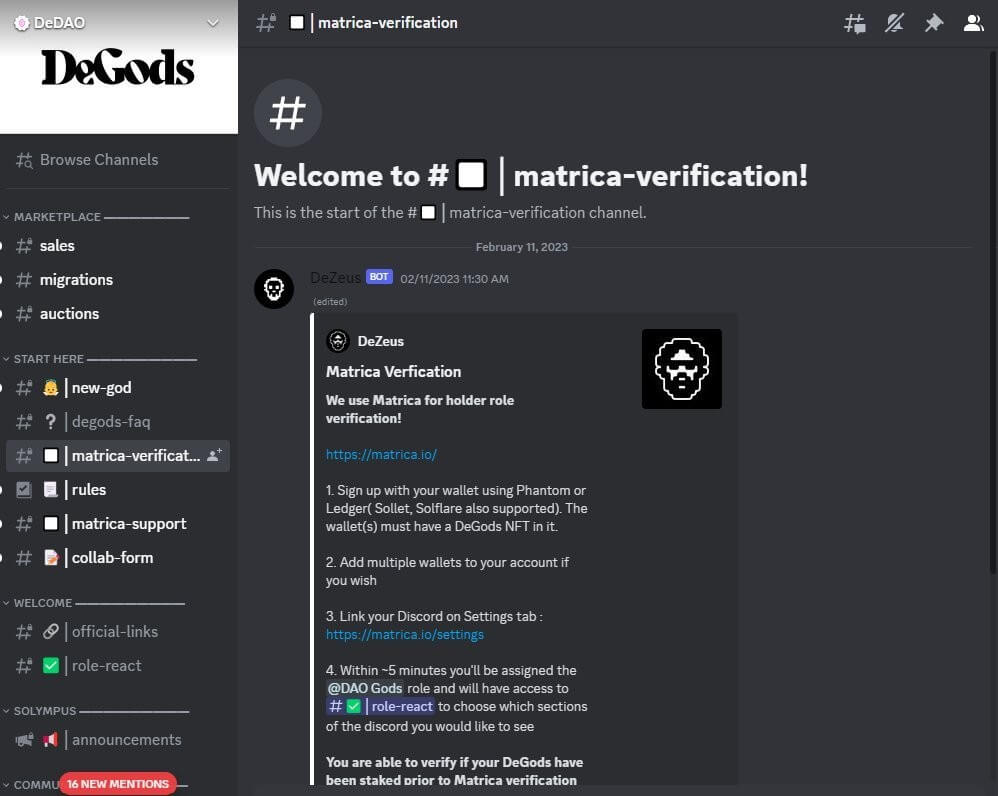
DeGods turned their Discord into a high-value community with exclusive chats, token-gated access, and active team engagement. This helped them build one of the strongest NFT followings.
Here are some tips to create an engaging Discord or Telegram channel:
- Create separate sections for announcements, general chat, and whitelist info;
- Keep it active where moderators and founders engage daily with the community;
- Host community events like trivia nights, Q&As, or live chats keep people coming back.
16. Offer Exclusive Perks and Airdrops
People don’t just buy NFT art—they want a community with real perks, exclusive access, and long-term value.
Aside from being a nice gesture, airdrops create excitement, reward loyal supporters, and are a great community-building move.
A good example of a project that continues to master branding via airdrops is Deskheads.
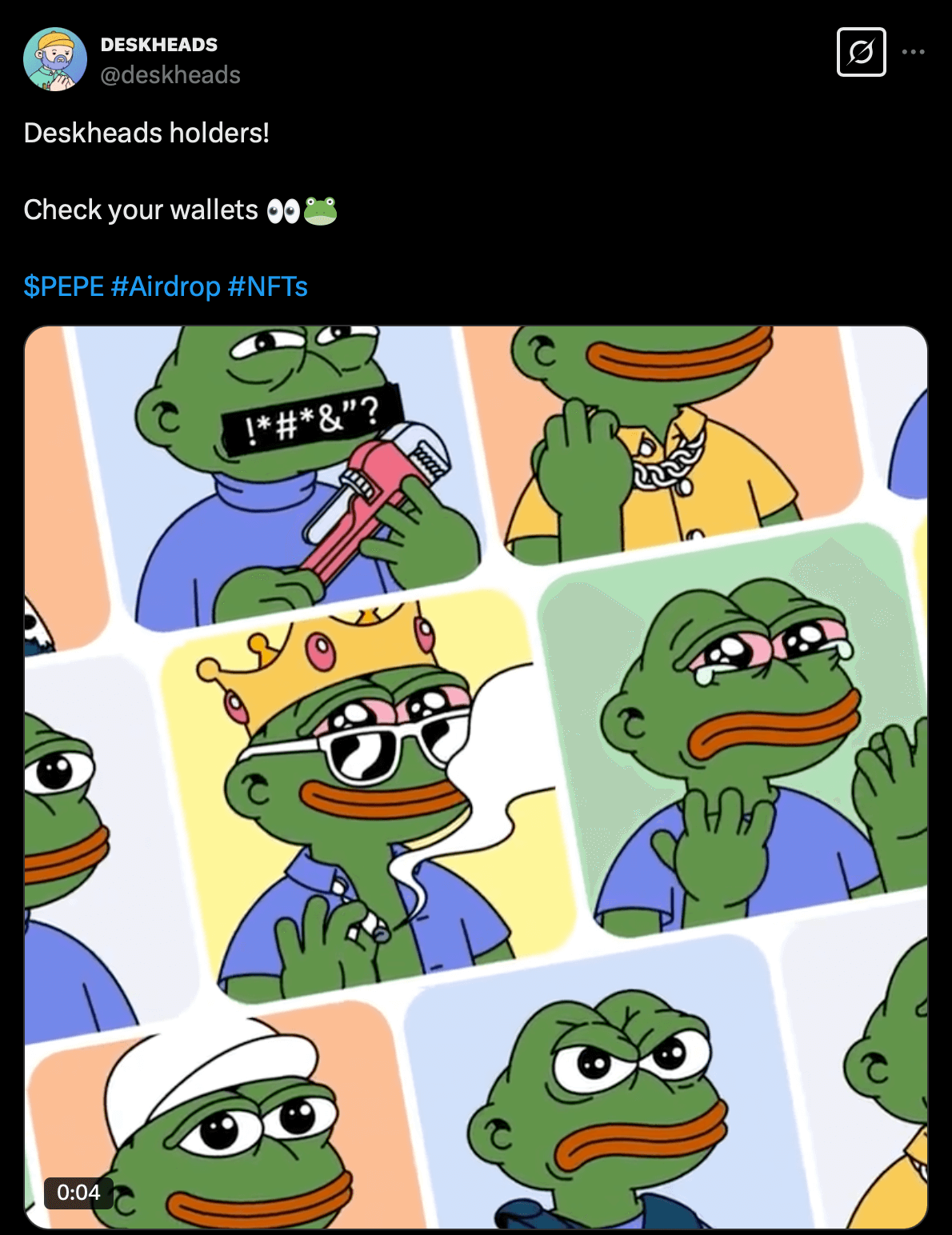
They did several airdrops and offered perks, which helped them build an enthusiastic community of over 25k followers across multiple platforms in a matter of months.
While the art of this project is great, the way they deploy their airdrops is nothing short of marketing brilliance.
You can also do so and grow your community by following some simple tips:
- Reward early supporters by offering exclusive drops, whitelist spots, or in-game assets;
- Make sure that airdropped freebies should have future utility;
- Announce perks strategically across X, Discord, and email to build anticipation.
17. Collaborate with Other NFT Projects
NFTs thrive on cross-promotion and community building. So, partnering with other projects is a good idea. It helps you grab the attention of an engaged audience, and gain credibility.
You can research online and find NFT artists, creators, and other brands and reach out to create an exclusive collection.
That’s what CloneX did in the past when they collaborated with Takashi Murakami to create an exclusive collection.
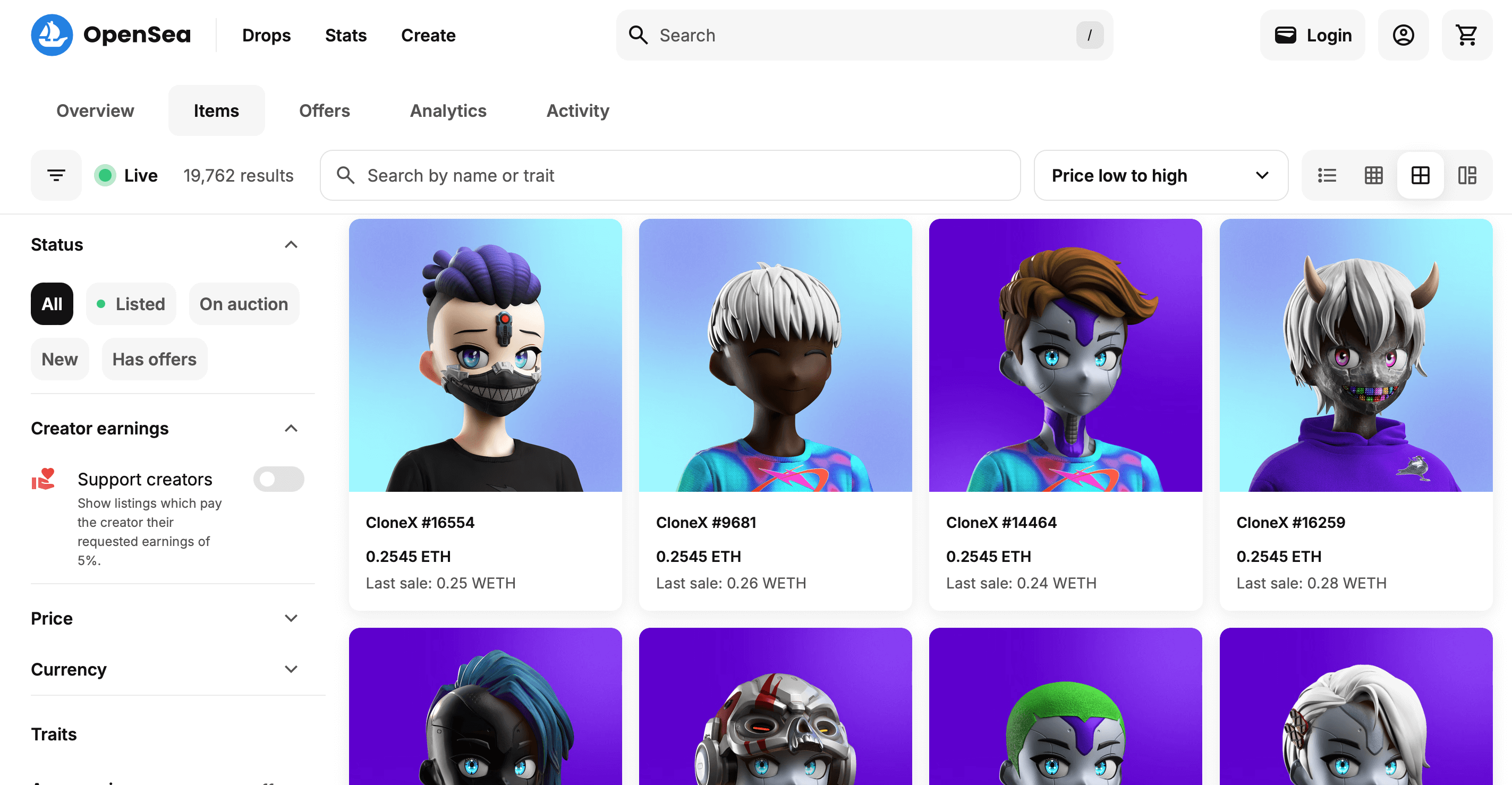
CloneX’s collaboration led to the creation of a niche collection full of high-end digital fashion NFTs. This attracted collectors from the NFT community, the art world, and gamers.
Here’s how to create collabs that work:
- Choose aligned projects with similar values, aesthetics, or utilities;
- Offer cross-community perks like whitelist spots, airdrops, or exclusive events;
- Host joint AMAs to create excitement and introduce your project to new audiences.
18. Implement Gamification Elements
Gamification is a popular technique known to boost engagement by tapping into a person’s desire for recognition, progress, and rewards.
When done right, it makes users feel like they’re progressing, keeping them invested in your project for a long time. One of the best examples of gamification in the NFT world is the Move to Earn model.
It has been used by many NFT projects like STEPN that turned their NFT sneakers into a gamified fitness ecosystem. Users earned NFT tokens by walking or running, which gave the NFTs real-world value and engaged people to keep coming back daily for rewards.
Here’s what you should do if you want to utilize gamification benefits:
- Introduce staking or rewards for holders to earn assets;
- Use tier-system to reflect rarity that makes users interested;
- Launch quests and challenges to engage daily active users;
19. Leverage Influencer Marketing for NFT Promotion
NFT marketing is all about community building and enhancing your credibility. Involving popular influencers to talk about your project is a great way to get attention from an engaged, Web3-native audience.
A well-placed mention will help you gain organic traction. Get the right influencers involved, and your NFT project will gain trust, and long-term momentum.
That’s exactly what Hunnys NFT did when they used influencers to gain traction after launch.
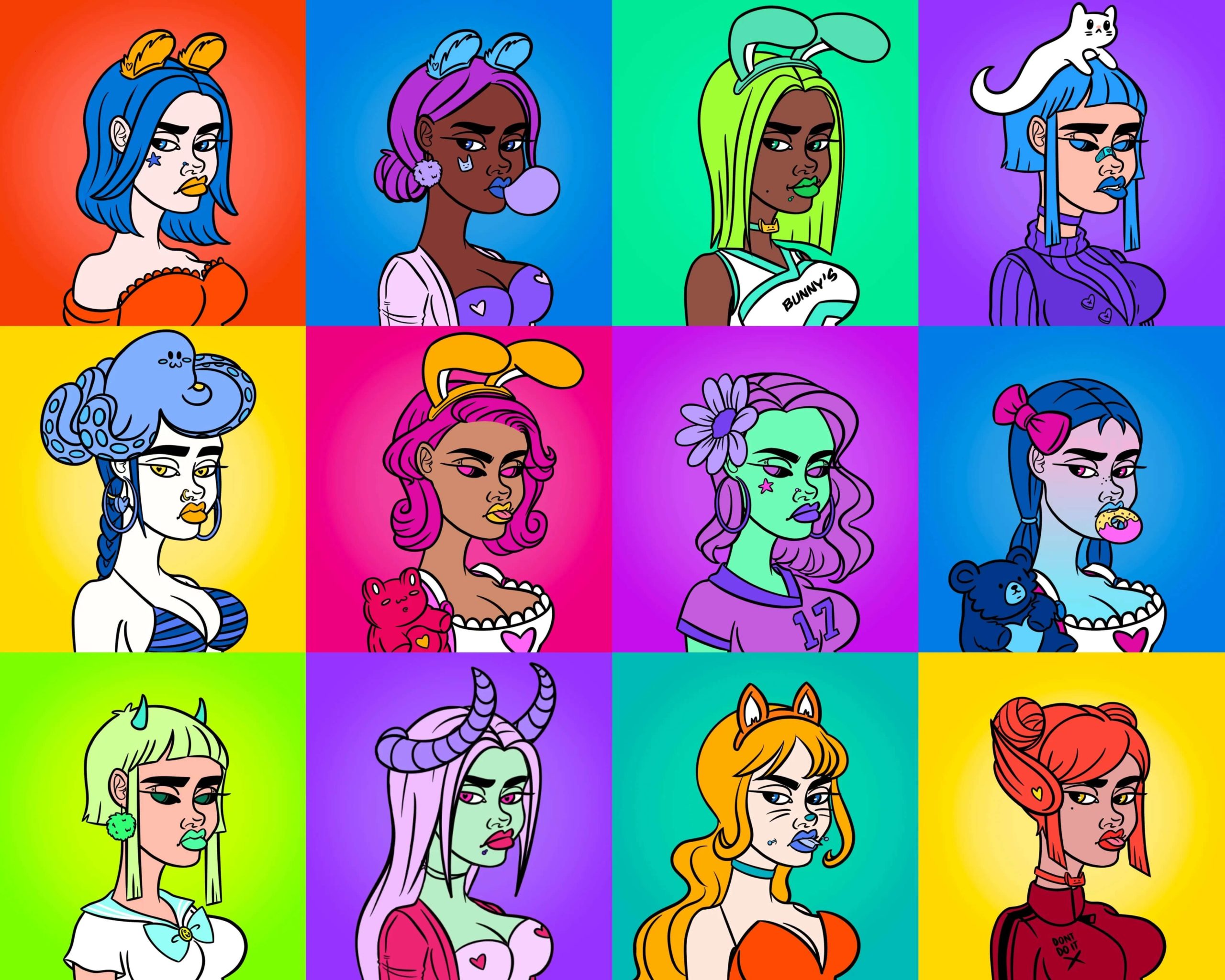
Though their focus was on building a community, they collaborated with relevant NFT influencers to get the word out. Influencers shared the project’s artistic vision, rarity mechanics, and long-term roadmap, generating organic interest among the enthusiasts.
This helped create thousands of organic discussions with collectors. Plus, this approach helped them build trust, increase visibility, and position Hunnys as a unique, art-driven NFT collection in a crowded market.
Here are some ideas you can also use to engage influencers for promotion:
- Host discussions with NFT influencers to drive organic conversations;
- Collaborate with influencers to offer exclusive NFT rewards and whitelist spots;
- Invite influencers to review your project on YouTube.
20. Create Interactive Experiences in the Metaverse
If you’re building an NFT project, you know that Metaverse is where digital ownership becomes real.
So, you should work on creating interactive experiences — hosting events, launching virtual spaces, or offering exclusive experiences to boost engagement. This will make your project feel immersive and attract a new crowd.
Popular celebrities like Snoop Dogg did that with The Sandbox to launch Snoop Verse.
Snoop Verse is where NFT holders can attend virtual concerts and interact with the digital world. This gave NFTs real utility beyond just holding them.
If you’re building for the long run, this can be a really great idea, considering the use cases of NFT beyond a collectible.
Here are some ideas you can use right away:
- Host virtual meetups for holders in Decentraland or The Sandbox;
- Enable NFT-powered experiences through virtual VIP access;
- Launch Metaverse wearables like NFT skins, accessories, or assets.
Is it Worth to Work with an NFT Marketing Agency?
With so many NFT projects launching daily, getting traction is hard. A good way to get some support is by hiring agencies that offer NFT ecommerce marketplace development and NFT marketing solutions.
A premier marketing agency can handle NFT marketplace strategies, crypto community engagement, and Web3 marketing, helping you scale your NFT sales faster than DIY efforts.
Here’s what you judge NFT marketing agencies on:
- Unique NFT marketing tactics. Check their past portfolio and evaluate based on novelty and engagement, whether for content marketing or NFT influencer marketing;
- Social media marketing. Look for agencies with experience in executing X, Discord, and TikTok strategies to grow your brand;
- Metaverse marketing & activations. Ask for examples of successful events inside The Sandbox or Decentraland, they’ve hosted;
- Development experience. Along with marketing, the agency should have in-house experts for developing an NFT ecommerce website. This speeds up a lot of things and ensures alignment between design, development and marketing strategies.
While working with experts saves time and increases exposure, make sure you start the engagement with a short trial before signing the dotted line.
Sources:
¹ https://www.cnbc.com/2022/03/10/trading-in-nfts-spiked-21000percent-to-top-17-billion-in-2021-report.html
² https://www.demandsage.com/most-expensive-nfts/
³ https://www.statista.com/outlook/fmo/digital-assets/nft/worldwide
⁴ https://explodingtopics.com/blog/nft-statistics#:~:text=The%20most%20expensive%20NFT%20sold,first%20four%20months%20of%202021
⁵ https://news.bitcoin.com/the-top-5-nft-marketplaces-surpass-40-billion-in-all-time-sales/
⁶ https://builtin.com/blockchain/metaverse-nft#:~:text=Art%2C%20sports%20trading%20cards%2C%20in,as%20representations%20of%20asset%20ownership.
